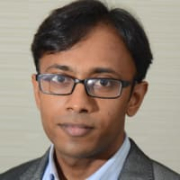What is our primary use case?
The main use case is "systems integration" for my company's enterprise customers across many different industry sectors.
Many of our customer projects use Oracle Integration Cloud or OIC iPaaS for integrations between disparate systems like ERP, e-commerce, and warehouse systems, from both Oracle and other vendors and technologies. Integration flows were developed for keeping product inventory, prices, addresses in sync between various end-systems and to support key business processes spanning many systems, departments, and organisations.
Additional non-functional goals were maintainability, stability, scalability, graceful error-handling, decoupling for loose-coupling of distinct core systems, and "predictable performance". The predictability has been verified via repeatable testing and seamless operation in production.
Additionally, we have implemented other use-cases like shipping integration (such as DHL, FedEx), order flows from e-commerce to ERP, & many more granular and custom use cases specific to customer needs (e.g. implementing internal APIs to support larger enterprise business processes or application user interfaces, bulk data reconciliation and many more).
In general, a cloud-based product helps avoid the high lead-up times and maintenance overheads involved in setting up in-house infrastructure, and this is adequately achieved by OIC iPaaS.
OIC, in particular, is also well integrated with Oracle SaaS ERP via "business events" and easy to integrate via Rest APIs (though other integration platforms also offer API-based integration, it makes a lot of sense to use OIC if a customer already uses Oracle SaaS). The recent addition of the Kafka-compatible OCI Streaming has since early 2023 allowed us to support a loosely-coupled event-driven integration between different products from different vendors, built on different technologies, and supporting different throughputs.
OIC offers a number of pre-built technology and SaaS adapters for high productivity for a wide range of target systems, both in-house via agents and cloud/SaaS, via a very flexible range of interfaces. These include APIs by way of Rest/SOAP over http/s, files like ZIP and CSV over filesystem or S/FTP, databases, and more. All of these interface types were utilized in our customer solutions to deliver a range of functionality in the form of "integration flows".
To summarise: OIC helped us to deliver high quality software engineering to our customers, with our solutions being comparably high in supportability, maintainability, loose coupling between disparate core systems, high cohesion in deployable units, clean interfaces, predictable runtime performance and other important properties for supporting any major enterprise
How has it helped my organization?
It offered a natural transition from, and in some cases, it complements Oracle's existing middleware like SOA Suite (now SOACS), Oracle Service Bus, etc, for many but not all use cases.
Furthermore, it offers a compelling solution within the Oracle environment that makes it easier to integrate Oracle SaaS ERP (via business events, APIs) with any other cloud or in-house product that might support many different interface types.
Our organization, as a neutral systems integrator with a "client advocacy" approach, also offers solutions built on open-source platforms like Apache Camel. However, the choice of platform depends on customer preferences, suitability, and fit with the rest of their IT environment. Singhpora Consulting aims to deliver good "Software Engineering", i.e. an optimal balance between upfront costs, quality, supportability, maintainability, and runtime performance to customers on tools and platforms best suited to them, rather than promote any one particular product.
To have a realistic picture of Customers must however keep in mind that the mere fact that it is "cloud" and "iPaaS" does not mean a zero-effort pay-as-you-go solution. There is still quality technical design and skill required in actually producing a good solution to be deployed on it.
Moreover, there is still ongoing effort involved in "Systems Administration". This includes functions like physical or virtual network setup and administration, information security, DB administration, patching, updates, etc. These are not directly "iPaaS" functions but important supporting functions, and the quality of these functions can be critical in every project. Some of these functions are also shared between the cloud provider like Oracle, other vendors, or the customer.
This is over and above quality and effort involved in the "Application Development" practice, which is what developers and applications architects do. We develop and deploy integration flows that run on the iPaaS platform.
Finally, the most important lesson from decades of Software Engineering should be that every IT system must be independently verifiable by professionals in a given area, such as accounting, supply chain management, or logistics. Automation (and increasingly AI) is valuable as a tool to scale up human effort, verifiability, accountability and explanability are very important properties of good solutions - OIC supports these via a visual flow designer, audit trails/OCI logging, transparency in business rules via the Decision Support System (DSS) component and many more inbuilt features, with adequate features to support more.
Once customers to keep these expectations clear when making a realistic assessment on skills, budgets, intended outcomes, etc., solutions delivered on OIC can vastly improve efficiency and deliver great value to many enterprises.
What is most valuable?
The most valuable features are (Reviewed and updated February 2024):
- Update Mar 2023-Feb 2024: OIC's native integration via the OCI Streaming Adapter with the Kafka compatible OCI Streaming service allowed us to develop a powerful and scalable integration with a third-party application chosen by the customer. This kept multiple core systems (built on different technologies, with different throughputs) completely decoupled. The setup of OCI Stream was much easier than a comparable messaging technology, as the setup was serverless. Scaling the message throughput was relatively easy via partitions, and third-party applications could use standard Kafka-compatible interfaces to produce and consume from the OCI Stream.
- Update Aug 2022: The Decision Support System component or DSS(decision table and rules engine) in general is a valuable feature that is closley integrated with the OIC platform's enterprise edition. It can be used to externalise logic from deployable code (hence simplifying releases whilst making key business logic more configurable and transparent)
- Process Cloud Service (PCS) supports the industry standard Business Process Management Notation (BPMN) for business analysis. Being part of the OIC platform, this facilitates closer collaboration between various stakeholders from multiple departments and even multiple organisations participating in a business process
- Easy to provision OIC environments (subject to security assessments and ensuring adequate security controls on endpoints)
-
Predictable costs and pay for use billing
- It is easy to scale instances, though scalability also depends on how well designed the actual solution is that is being deployed on Oracle Integration Cloud.
- Decent designer interface for flow design and manipulation.
- Easy to promote across environments as environment-specific "Connections" are decoupled from the actual "deployable unit" (the *.iar archive). This is a big plus, as it is better for security (credentials don't leave the environment) and also maintainability (less chance of deployment errors, less chance of promoting a deployable unit meant for TEST into PRODUCTION). Some of the other technologies do not offer this decoupling and I have seen first hand some of the undesirable situations this can lead to in some badly implemented legacy environments.
- A range of connectors for different interfaces like files, sftp, http/s Rest/SOAP, databases, and more. With OIC, things "just work", with the right skills, experience, and attitude of course.
- Update Aug 2022/reviewed in gen2 Jan2023: For quite some time now, XSL editing has possible in both Designer and Code modes (as of this writing, some important XSL constructs such as variables are not usable in the browser based designer view, even though they have always been editable via an external IDE like JDeveloper)
What needs improvement?
Improvements can be made in several areas, as follows:
-
Configurable timeouts on each connection would be better than a single global timeout that applies to all. The rationale for why timeouts are necessary is described here: https://weblog.singhpora.com/2019/07/fault-tolerance-in-integration-flows.html In my opinion, this feature can actually save resources (CPU, memory) for Oracle and also deliver better runtime functionality to customers.
-
Retryable scopes and activities could be useful.
- Easier ability to edit a DB operation via DBAdapter when a schema changes, such as a column added or removed from a table (Update Aug 2022: it's possible via the wizard but needs a slightly non-intuitive series of steps)
- Ability to add Java libraries for very corner situations like file/ftp adapter valves, which is a feature that exists in Oracle Service Bus and can be very useful in some rare situations.
- OIC arteracts should support standard source control formatting for easier comparison across versions
For how long have I used the solution?
We have been using Oracle Integration Cloud Service since Q3 of 2018.
What do I think about the stability of the solution?
Stability-wise, it is excellent. See the note on scalability. A scalable solution is also stable and predictable in the event of "infinite load".
What do I think about the scalability of the solution?
Scalability is an important non-functional requirement in any software engineering project. Scalability supports two other non-functional requirements: performance (e.g. throughput or data processed per unit time OR response time in a synchronous request-response scenario), and availability (for high availability, the environment needs more instances in a cluster so if one goes down, others can serve requests without causing downtime to consumers)
Scalability depends on two (occasionally competing) aspects:
- Platform-level scalability; this is the ease of provisioning hardware, VMs, application server instances in a cluster, etc. In the case of Oracle Integration Cloud, this aspect is well abstracted away from application developers and fairly easy to manage. It can easily scale up or down.
- The second important aspect of scalability is the actual technical design of the application. In OIC's case, "integration flow", that is deployed on the platform.
A well-designed solution can achieve the same performance on a fewer number of instances, less memory, and less CPU. A well-designed solution that is "scalability-friendly" would easily spread its load across multiple instances that might be available to it and its performance (throughput) would ideally improve linearly with an increase in the number of instances. An important quality of a scalable solution is also that in the event of "infinite load", it would only accept as much as it can easily process at a predictable rate given the resources available to it, and would then start accepting more as more resources are made available (a non-scalable solution would simply fail under such an 'overload' situation).
It often happens that some of these application design level aspects of scalability get neglected, therefore, customers often end up incurring unnecessary costs in merely "platform-level" scalability with the expectation that "performance issues" would go away by throwing more OIC instances at an application.
To deliver the best outcome to customers, both of the above perspectives on scalability need to be addressed.
For our customer's use cases, we achieved this with our application design and repeated testing with large data volumes. We did not over-engineer or over-optimize, even when we felt the solution could be enhanced to perform with higher throughput, we took customer's feedback on when the throughput was acceptable for their immediate business objectives, to avoid diminishing returns
How are customer service and support?
Technical support is excellent by and large, but could be better and more consistent.
How would you rate customer service and support?
Which solution did I use previously and why did I switch?
The choice of technology depends on the customer's environment, suitability for their use case, preferences, and other needs. We deliver solutions on multiple technologies and each can have pros and cons.
Oracle Integration Cloud was the best suited for some major enterprise customers.
On other customer projects, we have delivered solutions on Mulesoft, Apache Camel, Oracle SOA Suite, Oracle Service Bus, and more.
There are many "conceptual" similarities that I can see as a Software Engineer, but there are very many implementation level differences not just limited to technology but also in vendor support, community eco-system, and quality of professionals.
How was the initial setup?
The initial setup was straightforward and it was easy to get productive. Oracle offered initial support and guidance as well, as they were keen for the technology to be adopted.
However, enterprise customers MUST seek advice from qualified professionals around systems administration and network security, including penetration testing in consultation with Oracle, and must conduct a proper risk assessment as with any other non-trivial enterprise IT system whether or not it is cloud-based.
What about the implementation team?
We developed in-house. Singhpora Consulting was sub-contracted to develop key parts of the solution
What's my experience with pricing, setup cost, and licensing?
Many open-source products can offer a high level of customizability and no upfront licensing cost. However, there can be a high cost involved in provisioning infrastructure, expertise, and other aspects.
In the case of Oracle Integration Cloud, costs can be "predictable" as far as the platform and infrastructure are concerned. The platform offers a range of pre-built adapters and connectors but it is a closed platform controlled by Oracle. This has pros and cons in terms of flexibility versus productivity.
Which other solutions did I evaluate?
Yes, identical usecases were implemented on multiple platforms to identify the optimal balance of cost, time, and quality
What other advice do I have?
Self-promotion: Please visit https://weblog.singhpora.com or contact us directly on info@singhpora.com
Customers can contact us for no-obligations brief consultations for their use cases where they might consider our future involvement.
Which deployment model are you using for this solution?
Hybrid Cloud
If public cloud, private cloud, or hybrid cloud, which cloud provider do you use?
Other
Disclosure: My company does not have a business relationship with this vendor other than being a customer.


















